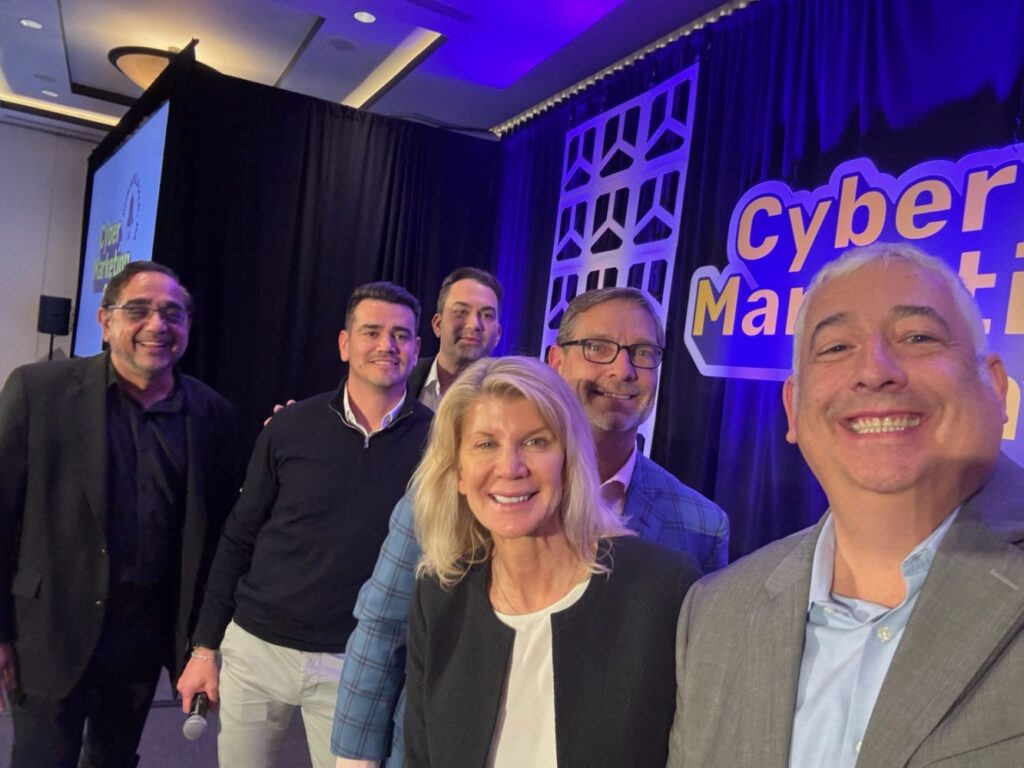Reflections from CyberMarketing Con: lessons in SDR & BDR success
Coming off a session called “CMO: Master of the SDR/BDR Domain” at Marketing CyberCon, I’ve been reflecting on some of the most impactful discussions we had around SDR/BDR alignment, AI’s evolving role, and what it takes to build high-performing teams. The best part of events like this isn’t just sharing insights—it’s the chance to hear from others who are in the trenches, facing the same challenges, and pushing the envelope on what’s possible. It was a great event – so I will start off with a shout-out to my fellow speakers, Mandeep Khera, Tracey Mustacchio and David Steifman and the team behind this amazing event, Maria Velasquez, Gianna Whitver and Scott Gordon!
David followed up with a great blog diving into many of these topics. As he put it, “Alignment isn’t a step; it’s the strategy.” That sentiment really resonated with me. True collaboration between sales and marketing isn’t just about one-off initiatives—it’s about building a system where both teams are accountable to the same goalsand work together as one motion.
Who owns the SDR/BDR team? The debate continues
This question always sparks debate: should SDRs and BDRs sit under marketing or sales? There’s no one-size-fits-all answer, but what stood out in our discussion is that ownership matters less than alignment. When marketing leads the function, there’s often better accountability in messaging and strategy. When sales owns it, there’s a risk of short-term focus—but if teams collaborate, the results can be powerful.
At the end of the day, it’s about clear expectations and shared goals between the CMO, CRO, and CFOto ensure SDR/BDR teams are set up for success.
AI is here—but it won’t replace SDRs
AI was a hot topic, and for good reason. We’ve all seen the potential of AI in data enrichment, outreach optimization, and even role-playing for SDR training. But the consensus? AI is a tool, not a replacement.
Some of the best real-world examples we discussed included using AI-driven email personalizationto re-engage cold leads and leveraging AI analytics to find the best time to reach a prospect. But the human element—understanding nuance, reading between the lines, and building real relationships—remains irreplaceable.
What makes an SDR team successful?
Across the panel, we kept coming back to three non-negotiables for building strong SDR teams:
✅ Training – A structured onboarding process that helps SDRs deeply understand products, personas, and processesis critical.
✅ Metrics that matter– It’s not just about MQLs. Measuring full-funnel impact ensures SDRs are focused on outcomes, not just volume.
✅ Career pathing– The best SDRs want to grow. Investing in their development keeps them motivated and engaged.
David’s blog also touched on something important here: “Data beats anecdotes every time.” Too often, SDR programs rely on gut instinct rather than hard numbers. Having the right metrics in place to track SDR/BDR successis crucial—not just to optimize performance but also to secure buy-in from leadership.
Bottom line: It’s all about alignment
One of my favorite insights from the session was this: alignment isn’t a step—it’s the strategy. Whether it’s marketing and sales working in lockstep, AI empowering teams instead of replacing them, or SDRs having a clear roadmap to success, everything comes back to shared goals and seamless collaboration.

The happy bunch after the session ended
If you were at CyberMarketing Con, I’d love to hear your thoughts—what resonated with you? And if you missed the session, check out David Steifman’s blogfor another great perspective on what it takes to succeed in today’s B2B landscape. Let’s keep the conversation going!




